Reading Python#
This notebooks goal is not to produce python code, but an introduction on to to make sense of (read) code.
We will go through and learn some Python terminology and structure.
You can install Python on your computer and write code from scratch, and we do have resources on getting started with coding.
However, if you are reading or using a digital scholarships or digital humanities project, you may just want to have a general understanding of what the researchers or developers are using code for.
The goals of this notebook is to help you develop the ability to:
Be able to identify some discrete pieces of code
Identify (at a high level) the processes we are going through
Jupyter Notebooks and Colab are computational notebooks that allow you to run code in your browser. There are many computational notebooks used in workshops and online books.
For more on computational notebooks see this page, JupyterLab & Notebooks
Reading Left to Right and Right to Left#
Python has a syntax… ….and it builds on what happened immediately before, line by line. So the value of y depends on what happened just before.
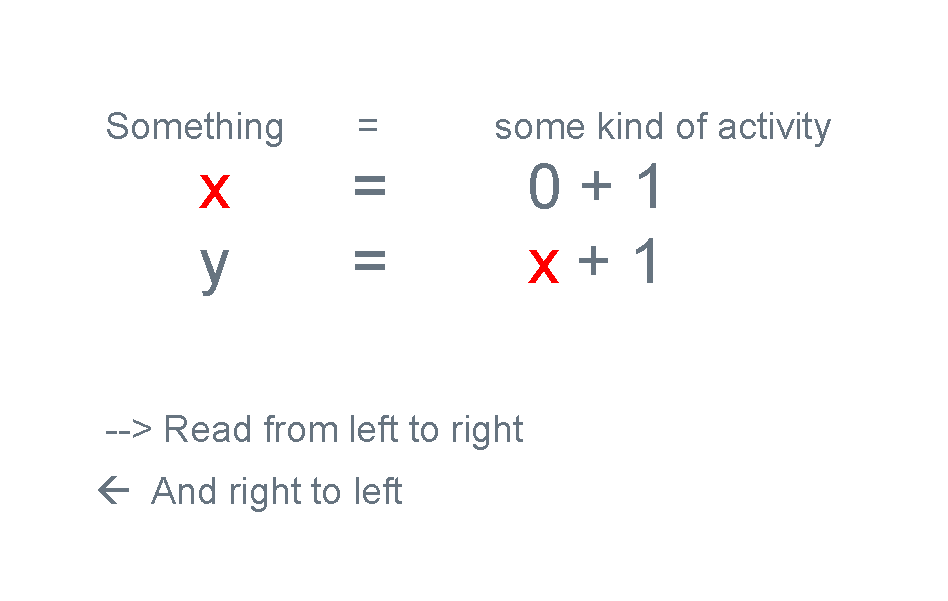
x = 0 + 1 # Python creates x and stores 1 in it
y = x + 1 # Python uses the value of x (which is 1) to compute y = 2
Human thinking → left to right.
Left to right: You read the line of code like a sentence: x = 0 + 1 means “x equals 0 plus 1.”
Computer execution → right side first, then assign left.
Right to left: Python evaluates the right side first (0 + 1), and then stores that result into the variable on the left (x).
Variables#
A variable is like a tiny container where you store values and data
Filenames
Words
Numbers
Collections of words and numbers
Etc.
Some useful vocabulary for python#
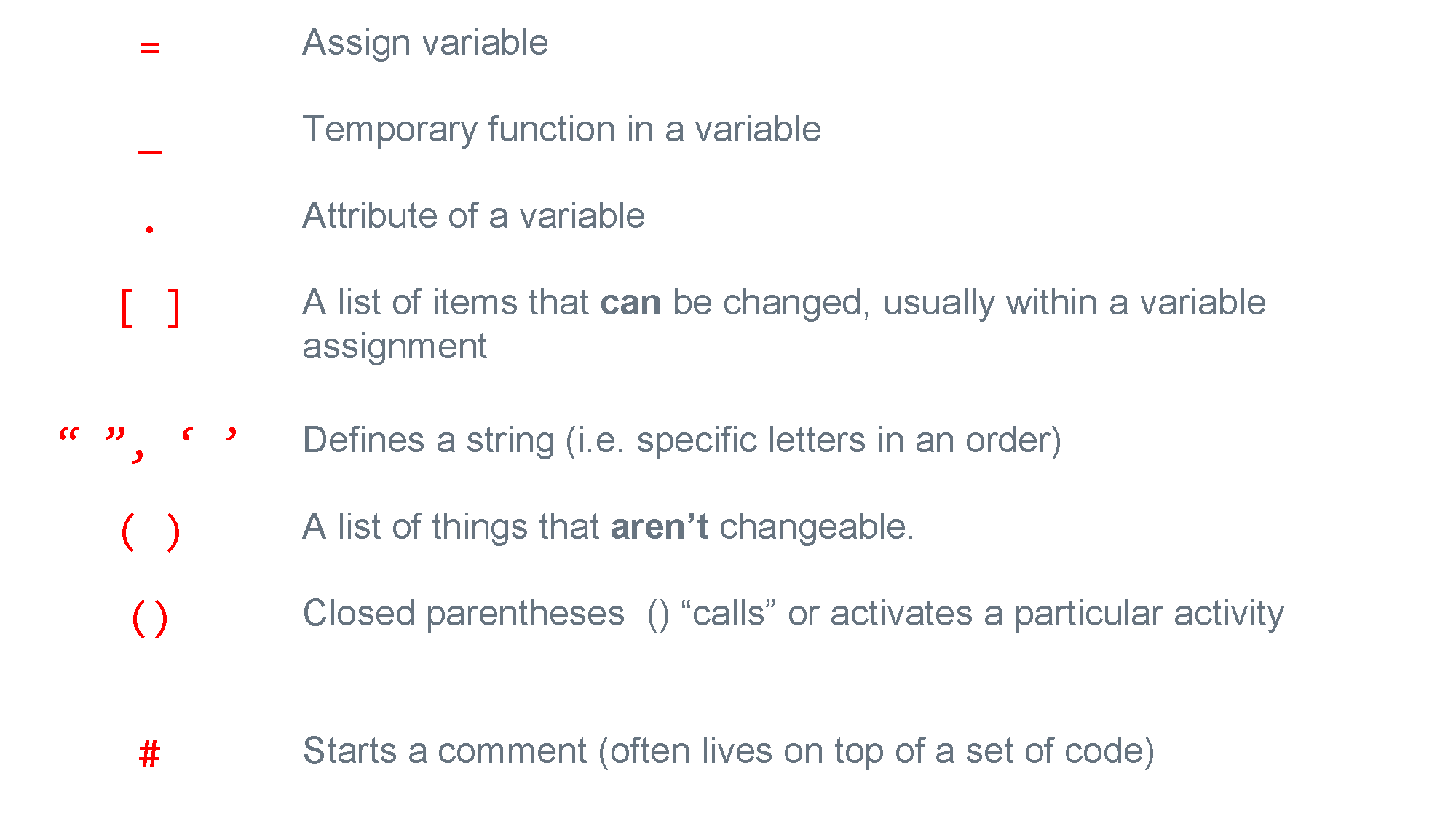
For exmaple: Teenage Mutant Ninja Turtles - Leonardo, Donatello, Raphael and Michelangelo.
assign names to the variable TMNT and return them
TMNT = TMNT.names[“Leonardo”, “Donatello”, ”Raphael”, ”Michealangelo”]
TMNT.names()
TMNT.names_colors = [“blue”,”red”,”purple”,”orange”]
Examples#

Let’s go though and read what this code is doing
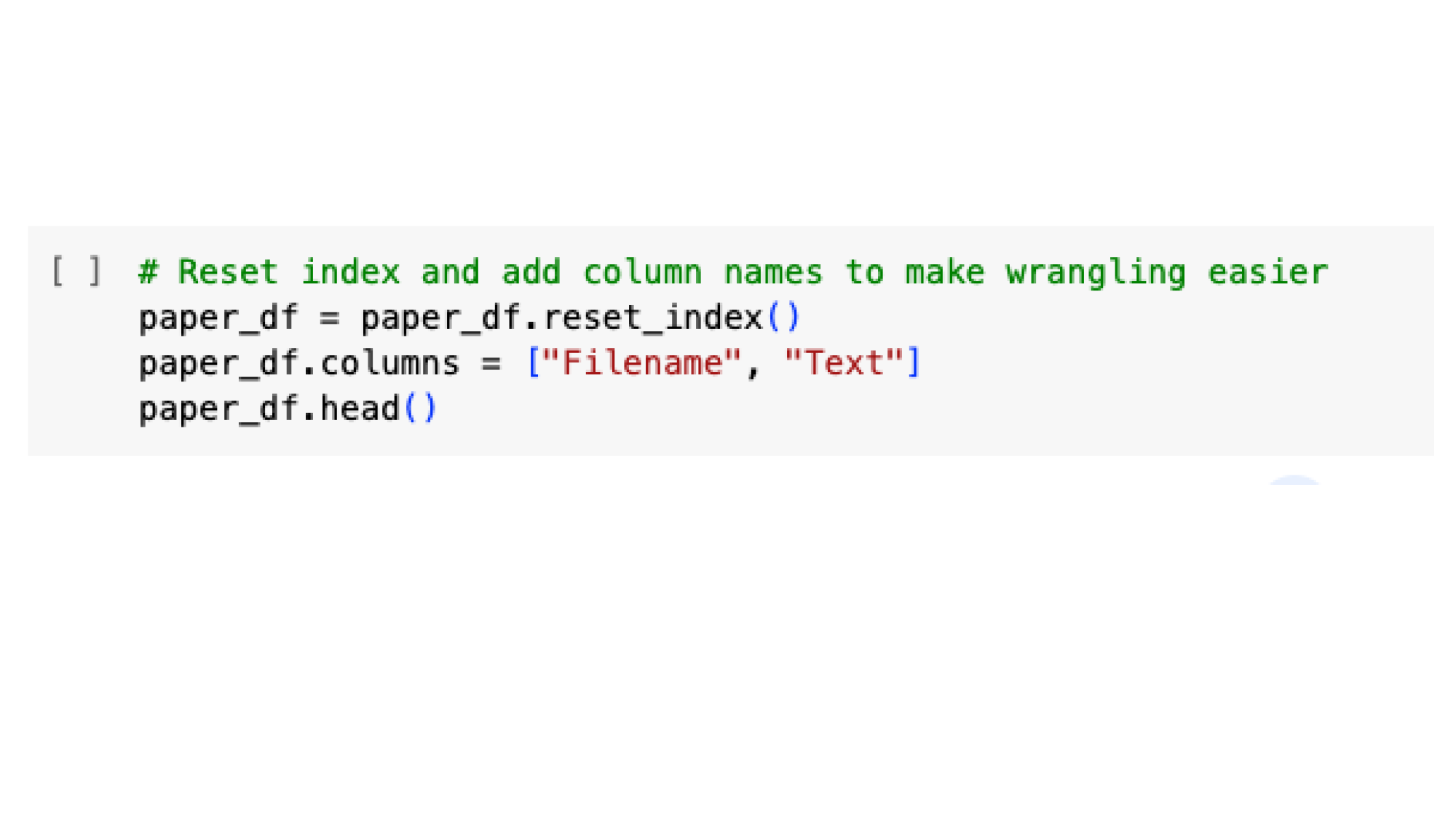
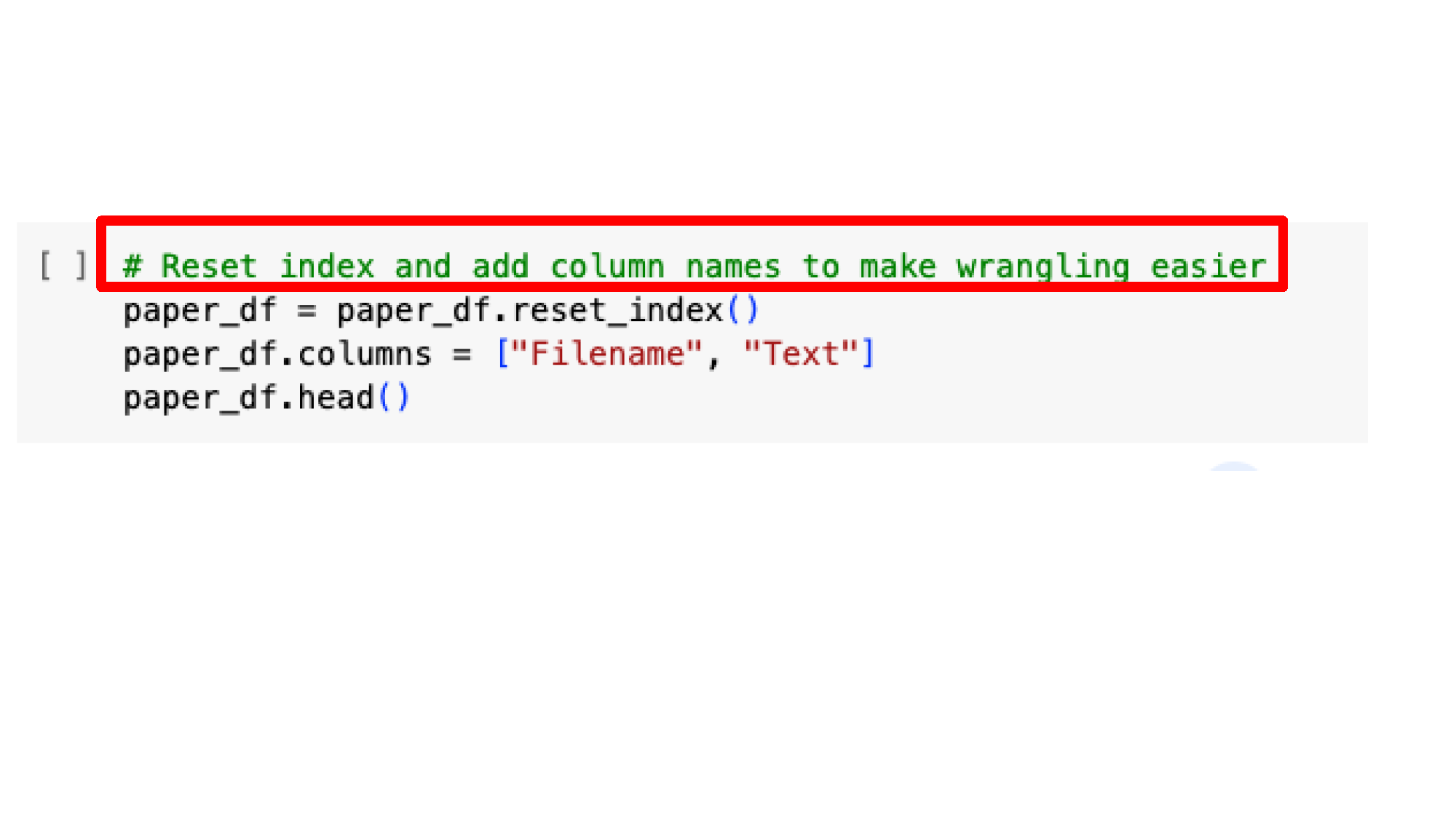
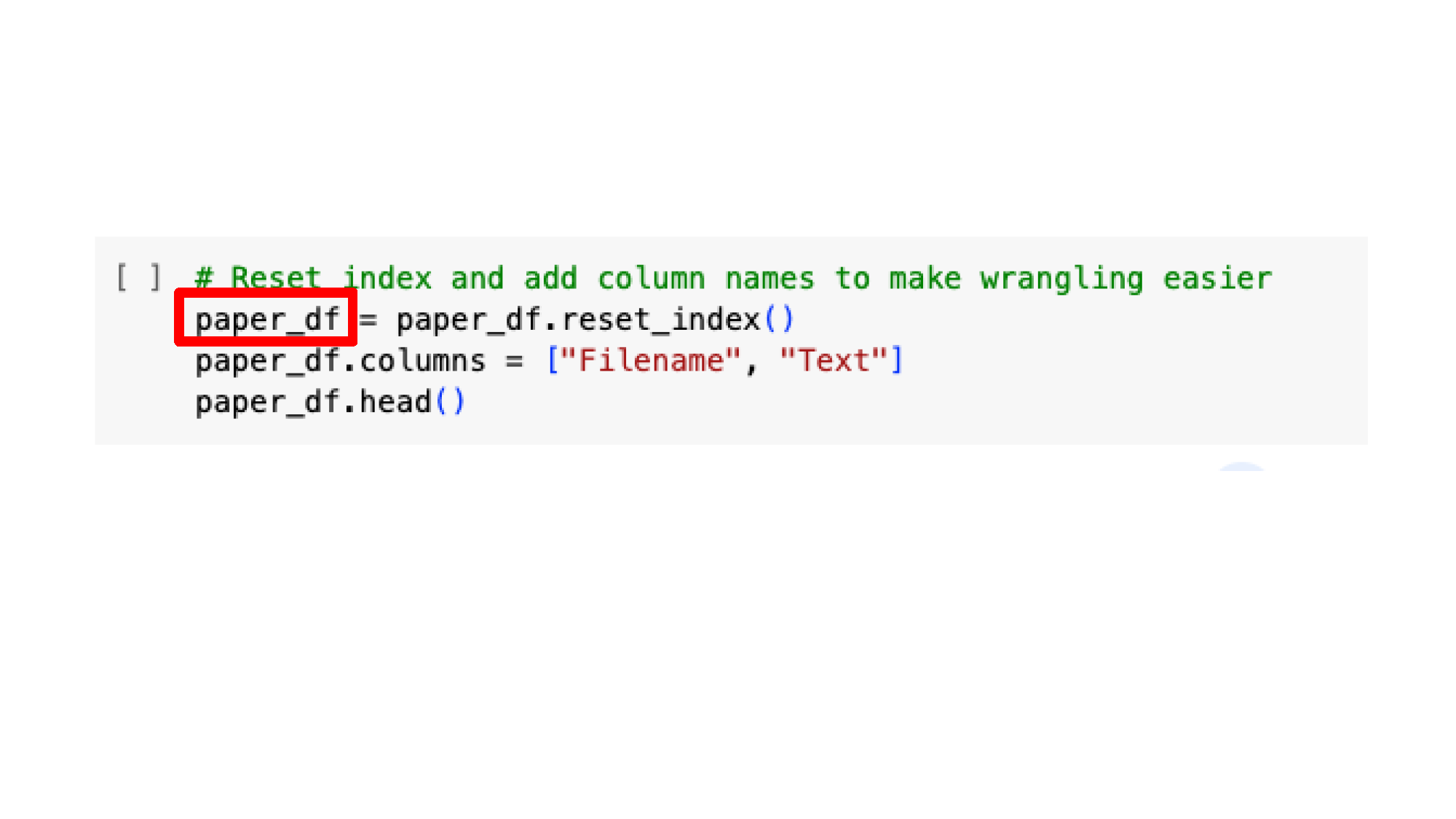
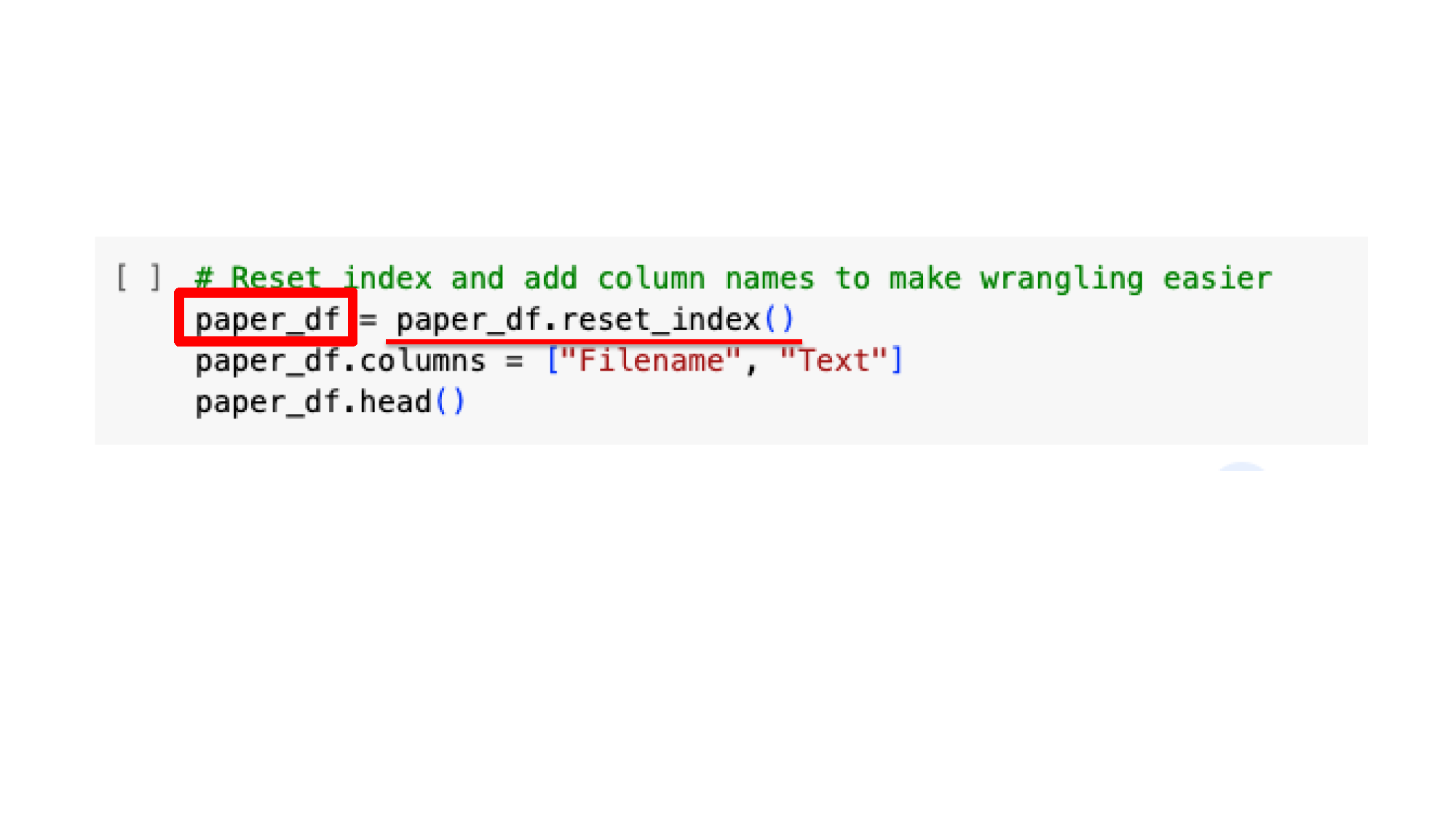
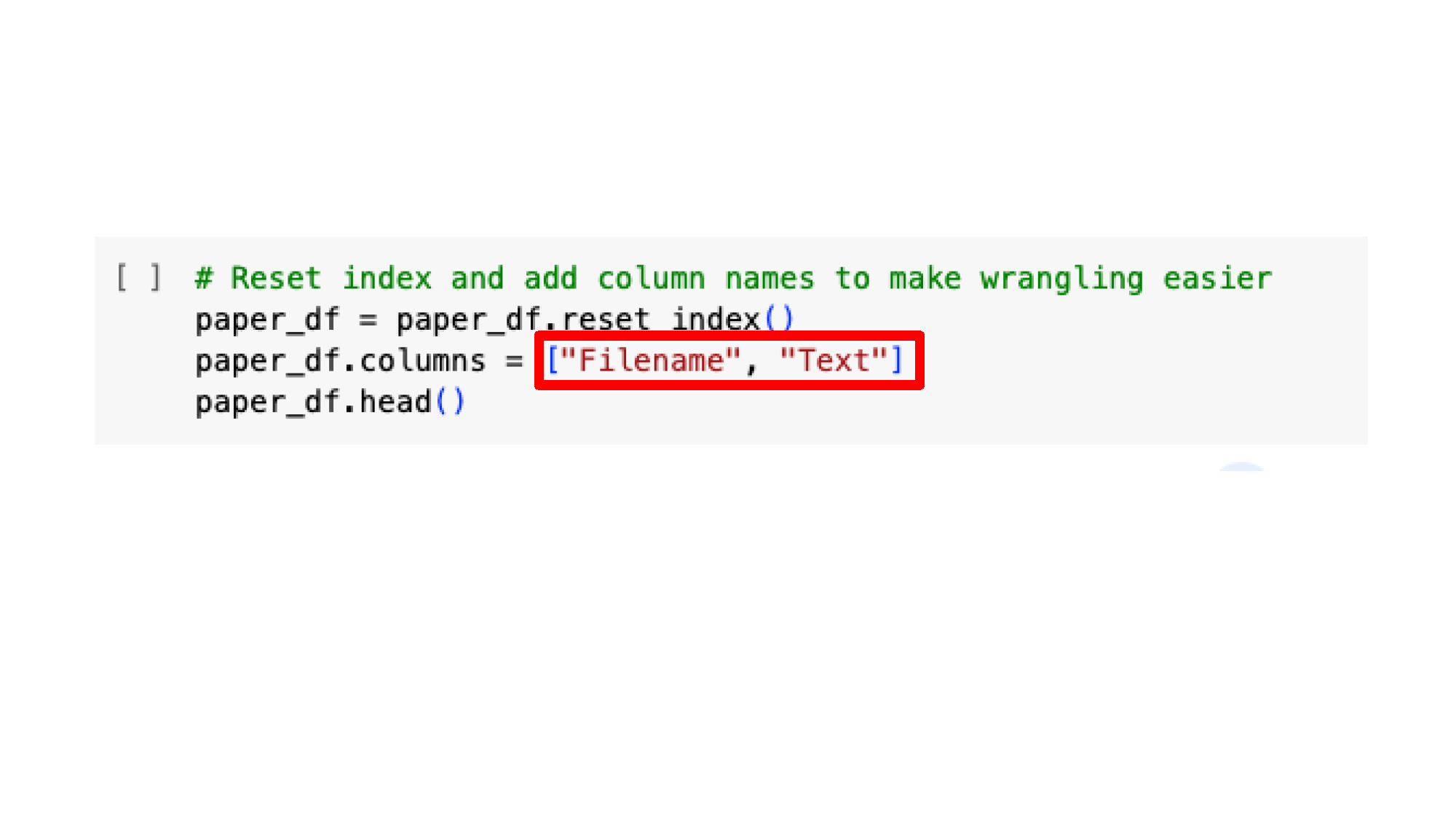
Some more useful vocabulary for python#
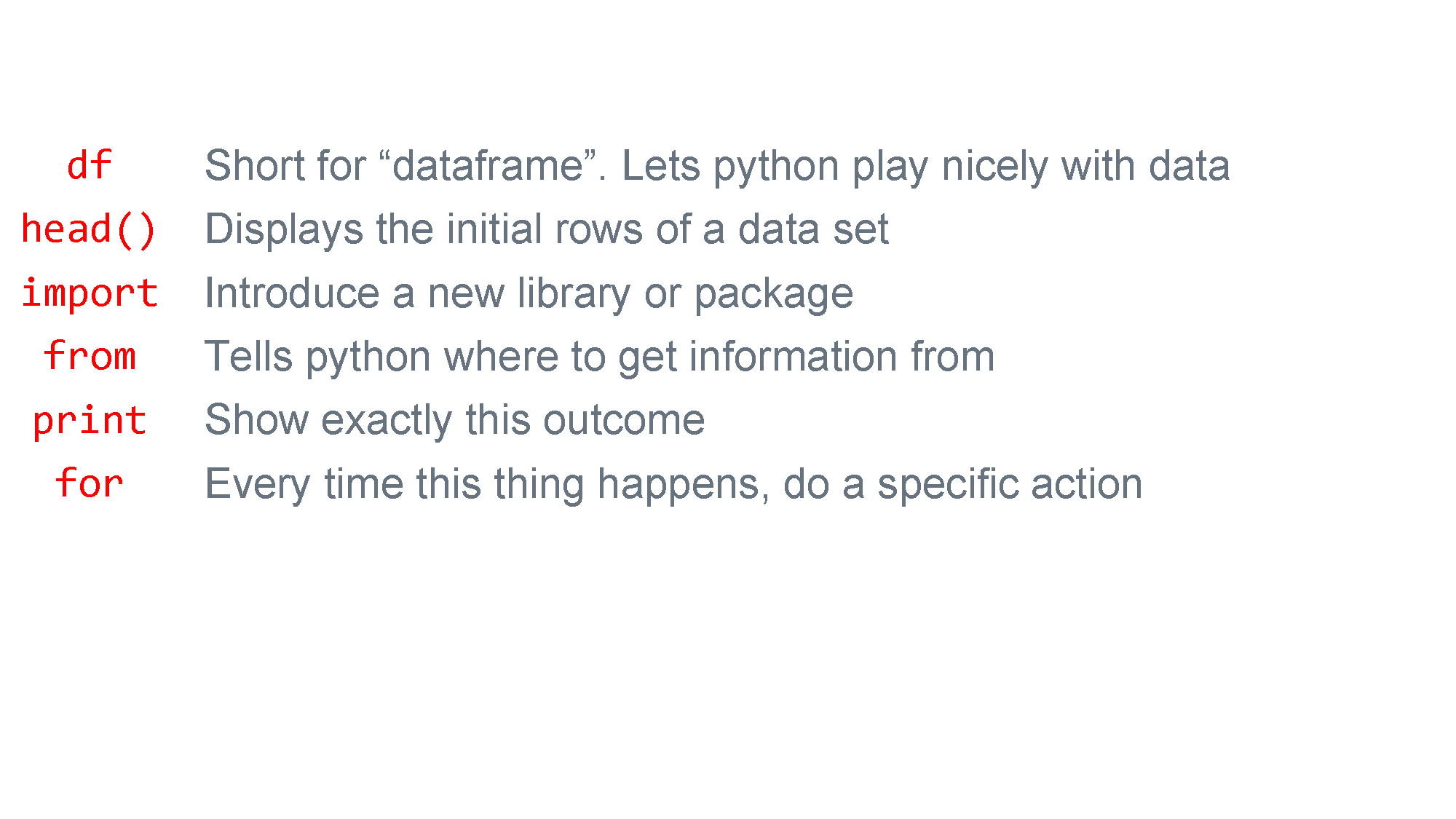
Libraries in python#
A library or package is a collection of pre-written code kits
They allow you do a bunch of different things
Sometimes you have to add a bunch of them in a row
There is probably an order to care about
What do you need to know?
Libraries in python: Examples#
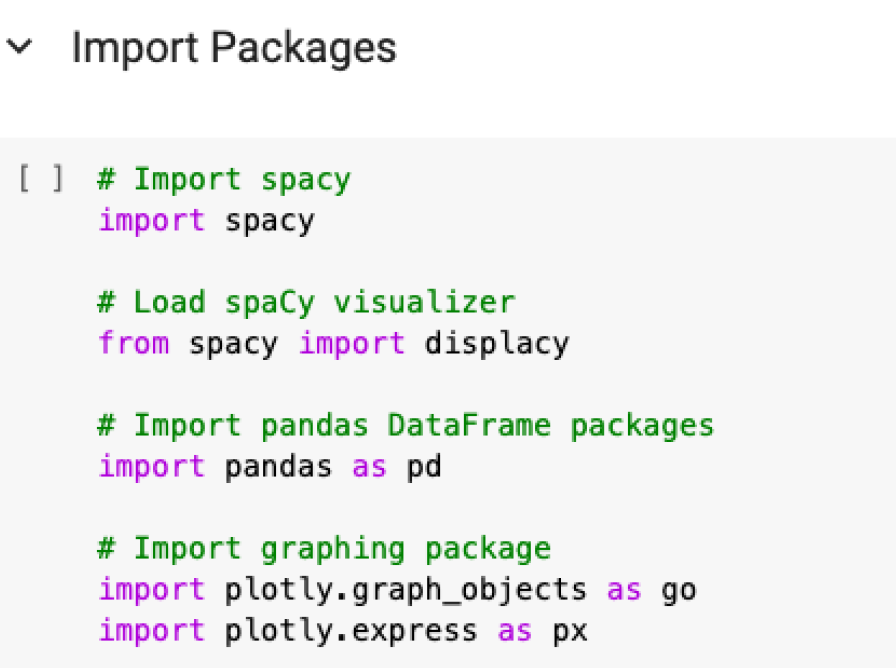
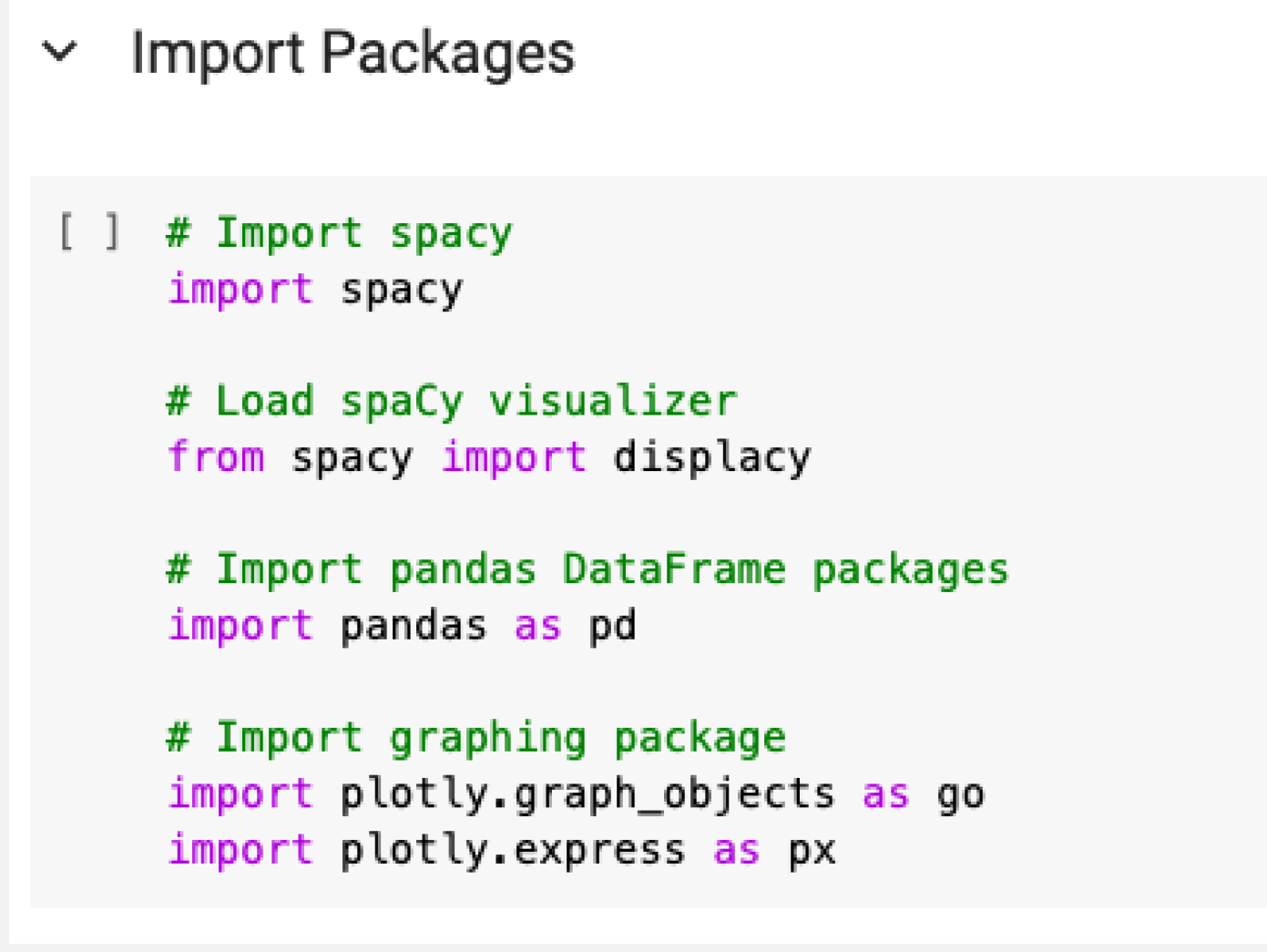
pandas is library specifically for working with data, cleaning it up, etc
Some examples from Introduction to Cultural Analytics & Python#
Iterate Through Dictionary#
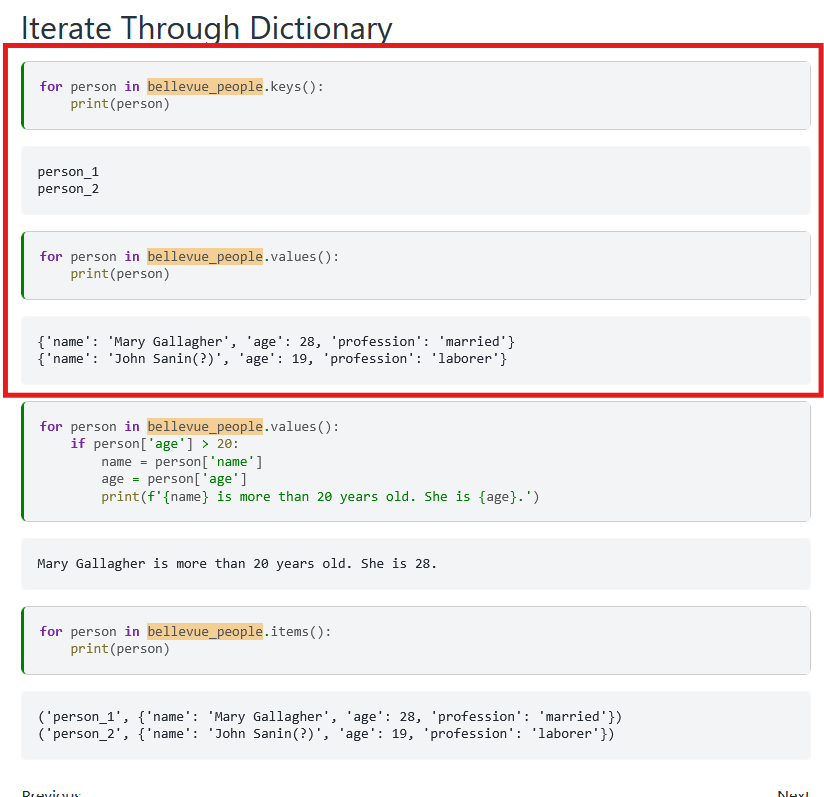
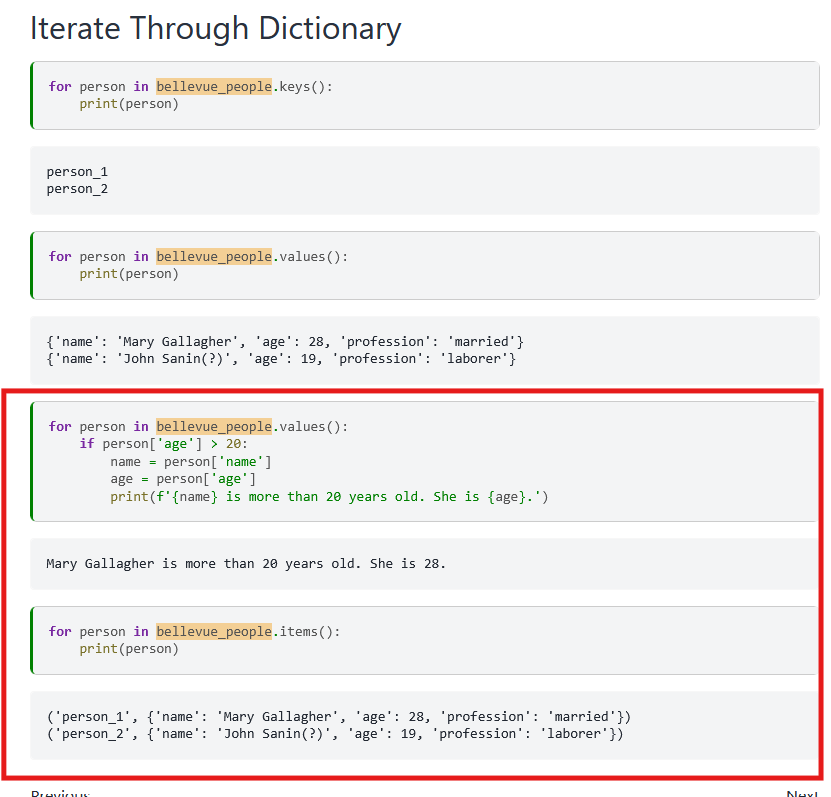
FOR intro a ”for” loop – idea that every time this thing happens, do this thing
IF introduces a certain level of logic
F’ (f-bar) is a formatting feature for strings (sets of letters-numbers)
{ } pulls in the dictionaries established
Sentiment Analysis Example#
What is happening here?
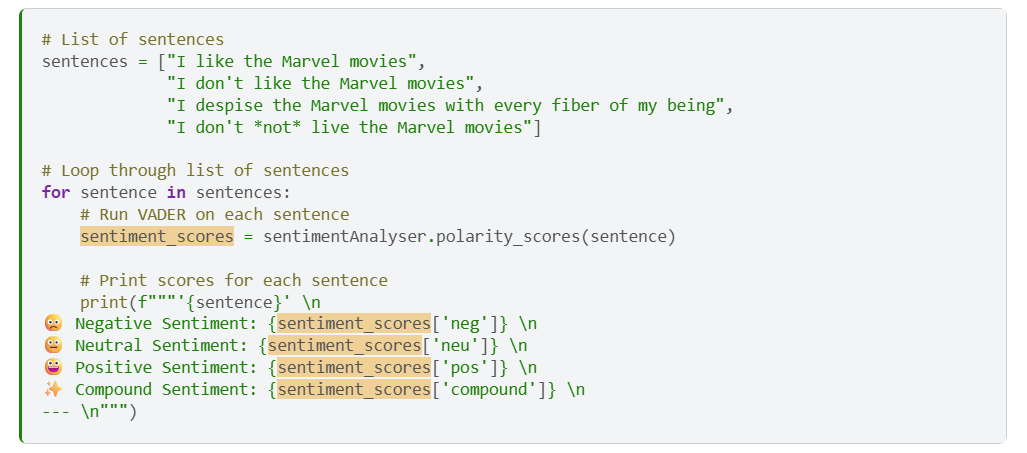
Results:
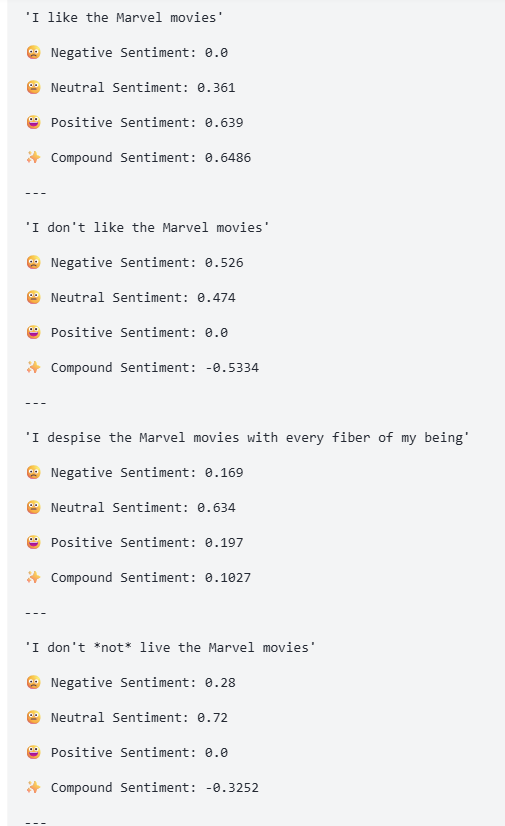
Named Entity Recognition Example#
This is a common form – fill a list with certain information. What does it ask to do?
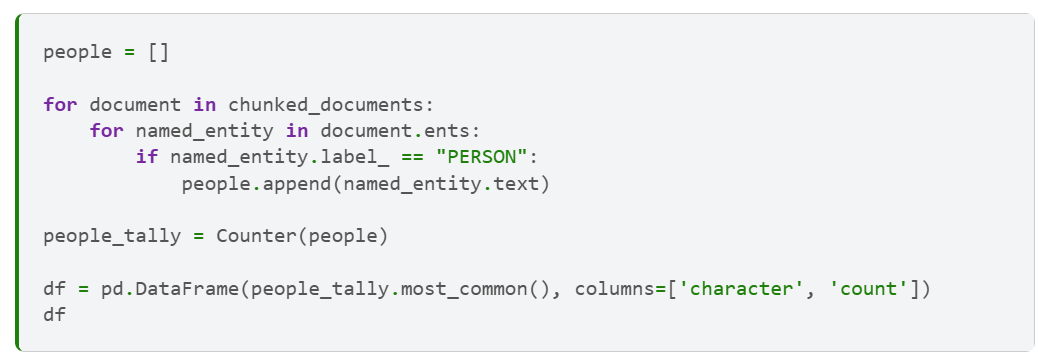
Ents = “entities”
also == is a TRUE Statement (because we know that = is a variable assigner, == if this condition is true THEN do something
Results
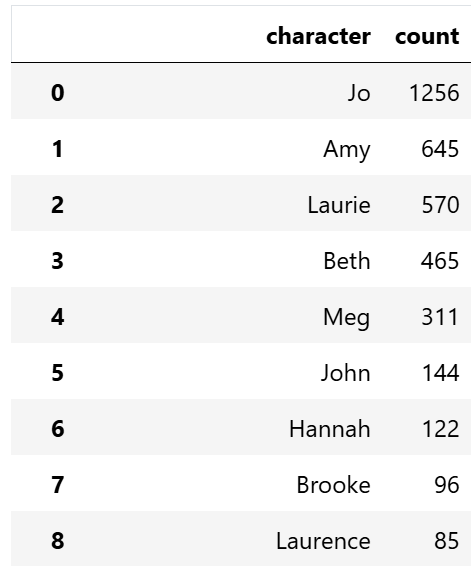
Part-of-Speech Tagging Example#
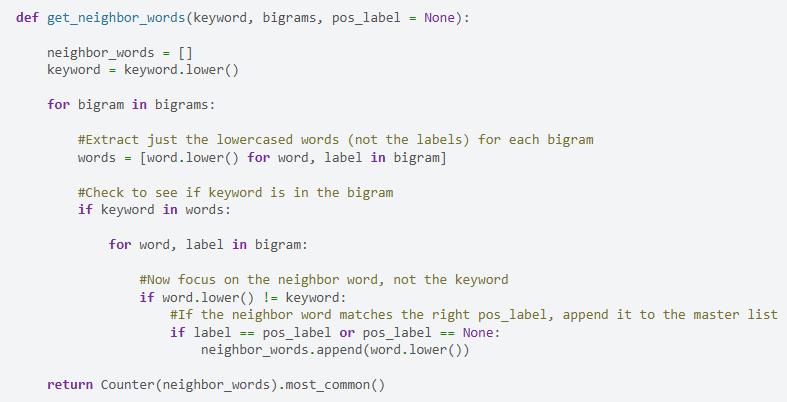
References: Introduction to Cultural Analytics & Python, Designed by Melanie Walsh
This online textbook offers an introduction to the programming language Python that is specifically designed for people interested in the humanities and social sciences.
Attribution
READING PYTHON: a program of commands for talking to your computer Created by Dr Heather Froehlich used under Creative Commons CC BY License


